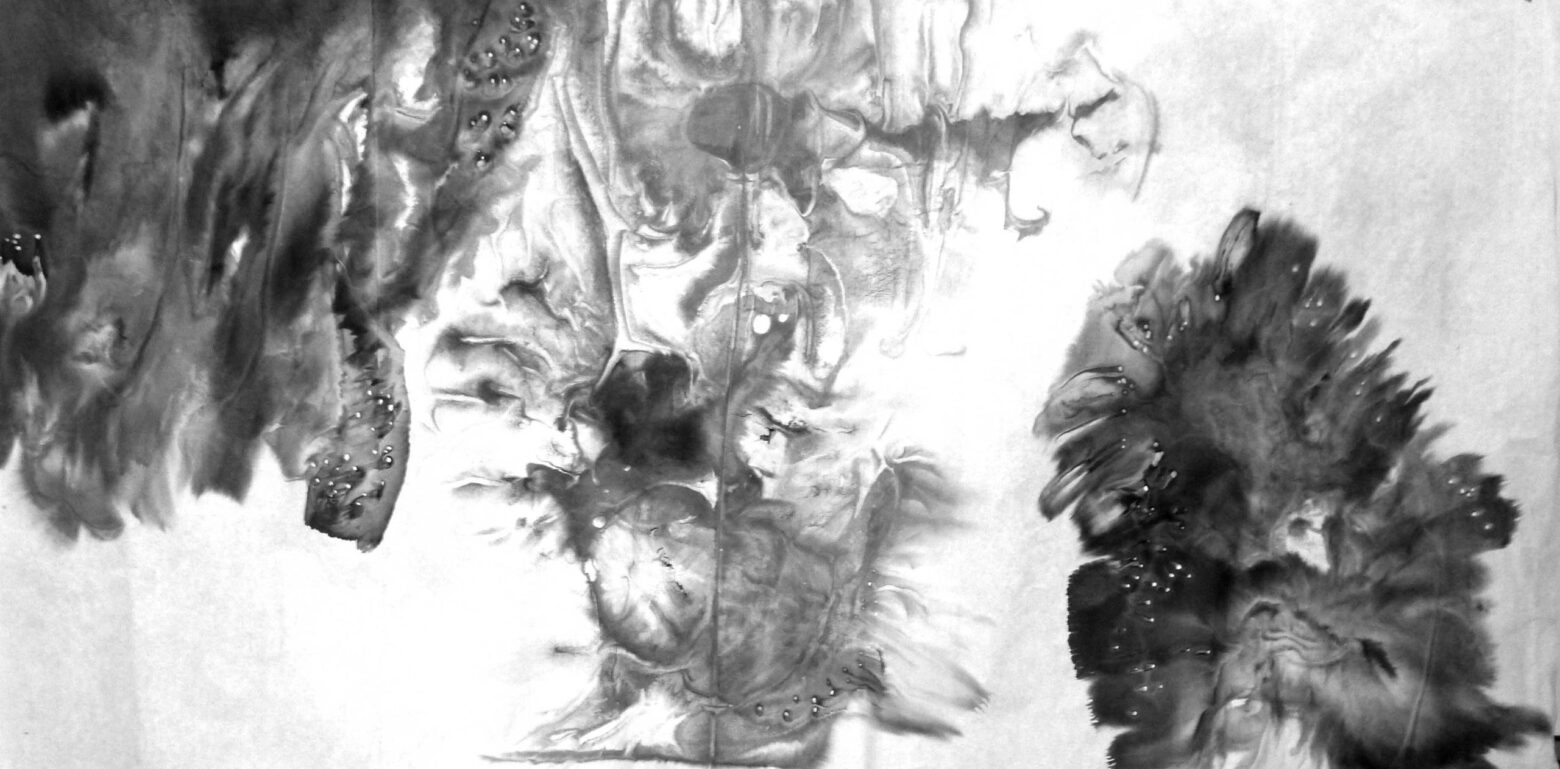No Room For Form
“Now what shall we call this new sort of gazing-house
that has opened in our town where people sit
quietly and pour out their glancing
like light, like answering?”
Jelaluddin Rumi, No Room for Form *
Seeking as we all do some sort of reassurance of the eternal, in the poem, No Room for Form, the 13th century poet Rumi has drafted an elegantly complex but simple reminder of the ways we come to “know” the way to personal salvation. In similar ways, the four artists in this exhibition portray their own confidence in the eternal values of humanity through their work. Each painting by each artist expresses his search for the peace and beauty of resolution through risk. As different as each artist’s work is from the others in this exhibition, there is a familial materiality about the techniques that are used, and the abstract forms that portray their quest. The body of works by each artist represent their own “gazing house that opened in our town” as we encounter them “pouring out their glancing like light, like answering(.)”
The artists in this exhibition, brought together through friendship and mutual admiration, are all abstract painters. The artist at the center of this gravitational pull, Ming Ren, has invited David Frazer, Fred Martin and Jeremy Morgan to join him in his own “gazing house” that this exhibition provides. The result is a powerful reminder of the personal quest of each artist toward the truths of their own work as they seek to resolve it. All four artists are abstract painters, whose exploration of their complex media experiments move between discovery and control.
The gravitational pull of abstract art has not ended. As much as subsequent generations of artists have attempted to snuff out the light of this intense movement that has swept the globe over a half century of experimentation, the four artists in the exhibition prove that there is still much room for discovery, beauty and pleasure in abstract painting. Released from the boundaries of strict formalism to learn from the intervention of chance and interaction with the media that they use, these artists challenge their viewers to discover in their work their own pathways of understanding and truth. And each artist demonstrates their search in their process of making, incorporating their ideas and influences that have brought them to their current level of achievement.
Ming Ren’s work has deep roots in Chinese ink and brush painting. His earlier work more literally composes landscapes that reflect ancient Chinese forms and traditions from the seeming random pouring and washings of his pigments. In these more recent works, Ren achieves an almost geologic sensibility through the pouring of his paints, twisting of the wet Shuan papers, and the chance movement and absorption of the colors in them. The painted surfaces seem almost like marble, gem stones, quartz and other hard surfaced materials. The opposition of the real softness of the paper and the washed pigments and the illusion of hardness of fire-pressed fissures of stone explodes the traditional Chinese imagery by expanding the potential of its technique. While historic Chinese fashion dictates tight discipline, Ren challenges this rigor by expanding the potential of the medium through his own careful experimentation.
Jeremy Morgan’s work is similar in that it benefits from the chance manipulation of acrylic pigments that merge in their wetness to create multiple transparencies and edges. His work stems apparently from his effort to fuse the conceptual and perceptual, “pivotal points between internal feeling and external stimuli, a meeting place of the material and non-material.”** Thus Morgan seeks through chance and variation a similar pathway to Ming Ren’s through illusion to the truths that painting can reveal to the viewer. Morgan’s paintings work their magic in both large and smaller scale, in which the colored forms overtake the space and attempt to project their intensities and subtleties out of the space Morgan allots to them.
Fred Martin’s and David Frazer’s work shares the complexities of mediated geometric and fluid naturalistic forms. At times their paintings seem like landscapes into which geologic or biologic forms have been entered. Directed by strong diagonals and purposeful shapes, their compositions become overburdened by the necessities of these forms. Their paintings erupt into almost rude conversations of artistic intentionality; a real conflict erupts within each painting only to be quelled by the artists’ direction. Martin, the older conversant in this exhibition’s dialogue, studied at the California School of Fine Arts (now the San Francisco Art Institute) under David Park, Mark Rothko and Clyfford Still. One can see remnants of the cross influences of these artists and others in Martin’s work. The energy that Martin portrays as being released in his work is extraordinary. There is a fervent biology to his compositions as he references images, textures and shapes that are both self-referential and also reminiscent of previous decades of abstract art. In fact, Martin’s reputation comes not only from his works of art but also from his critical and art historical writings and lectures. He is also a distinguished teacher and academician, having served as Academic Dean and professor of drawing and painting at the San Francisco Art Institute for many years.
David Frazer’s paintings tend to be more muted in color, but no less active in composition and form. The works seem to be wrestling matches of drawn and painted shapes, grids and images. The textures of Frazer’s paintings are actively in conflict, often seen through and over one another. His paintings frequently appear to becoming or disassembling landscapes with natural forms in them, such as birds and squirrels. These animal forms only serve as reminders of nature, but are seen as placed there by the hand of the artist as markers within more complex mind-scapes of memory. Frazer resolves his subtle work by the beautifully calibrated muted palette of colors and textures he uses in balancing the complex compositions he posits as questions to be resolved.
The exhibition will illuminate viewers’ questions about the nature of the creative act in ways that are inspiring and reassuring. The exploration of abstraction of the four artists in this show reveal the continuing potential for personal expression of the quest for the divine through art. The artists whose work has been brought together form a conversation about the complex nature of painting as one means by which humans can demonstrate their search for meaning through making art. By viewing gesture, color and form arranged intentionally by thoughtful people, we can “pour out our glancing, like light, like answering(.)”
Roger Mandle, Ph. D.
South Dartmouth, Massachusetts 2014
*The Essential Rumi, translations by Coleman Marks with John Moyne, A. J. Arberry and Reynold Nicholson, Harper San Francisco, 1995, p.138-9.
**Art LTD Magazine, July 2009.
Biography of Roger Mandle
Roger Mandle is a distinguished educator and museum leader, whose long career includes being President of Rhode Island School of Design for 15 years – 1993-2008. His prior appointments include Deputy Director and Chief Curator, National Gallery of Art, Washington, D. C. (1988-1993); Director of the Toledo Museum of Art (1977-1988); Associate Director, Minneapolis Institute of Art (1967-1974). He was a member of the National Council on the Arts, Vice President of the American Association of Museums Board of Trustees, Chair of the Executive Committee, American Federation of Arts, President of the Board of Newport Restoration Foundation, Board of the Association of Independent Colleges of Art And Design, and Silk Road Project.

